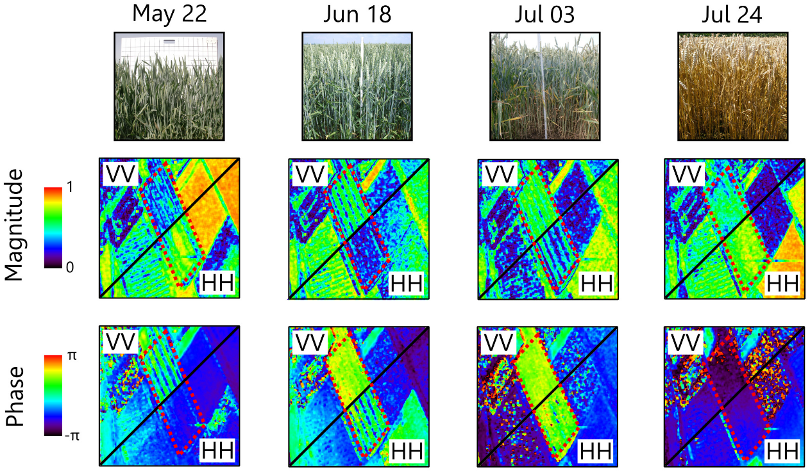Agricultural monitoring

SAR Polarimeteric analysis of agricultural crops. Magnitude (above) and phase (below) of the interferometric coherence for a wheat field throughout the plant growth season. Sensor: German Aerospace Center’s F-SAR; radar frequency: C-Band (≈ 5 GHz); spatial baseline: 40 m; polarimetric channels: VV (upper left corner) and HH (lower right corner). The wheat field is highlighted in red. (© Manuele Pichierri)
Current research activities are focused on the development and validation of methodologies for estimation of crop condition (e.g. crop height, extinction coefficients and growth stage) by means of Polarimetric SAR (Pol-SAR) and Polarimetric SAR Interferometry (Pol-InSAR).
These studies may help to characterize the morphology and the dielectric properties of different crop types, as well as the interaction of the vegetation with polarized waves at different frequencies. The current studies focus on:
- Estimation of the morphology and the growth stage of rice fields using a probabilistic inversion of a morphology based polarimetric electromagnetic scattering model
- Multi-parameter (i.e. multi-frequency, -baseline, -temporal) Pol-InSAR inversion for biophysical parameters (e.g. height, extinction coefficients) retrieval from airborne data
- These studies may help in devising new acquisition strategies for crop parameter estimation (such as airborne campaigns or future satellite missions like Tandem-L).
